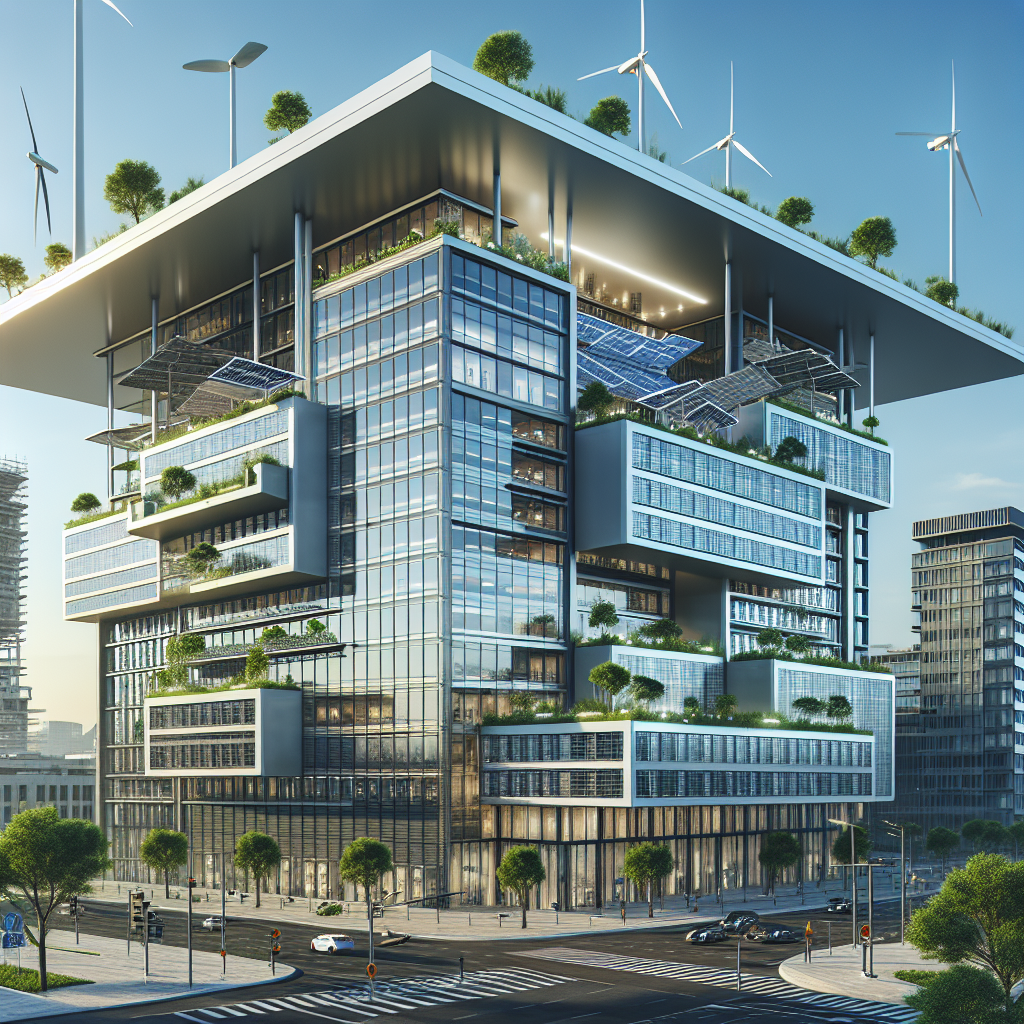Zero-Energy Buildings: The Future of Construction
In an era where sustainability and energy efficiency have become paramount, the construction industry is undergoing a significant transformation. Among the most promising developments in this field are Zero-Energy Buildings (ZEBs) – structures designed to produce as much energy as they consume over the course of a year. As concerns about climate change and environmental degradation escalate, ZEBs are not just the future of construction; they are the future of a sustainable, energy-efficient world.
Understanding Zero-Energy Buildings
Zero-Energy Buildings achieve their status by combining state-of-the-art energy-efficient construction techniques with onsite renewable energy generation, typically through solar panels, wind turbines, or bioenergy systems. This dual approach not only reduces the overall energy consumption of the building but also ensures that the energy used is green and sustainable.
The Benefits of Zero-Energy Buildings
The advantages of ZEBs extend far beyond their minimal environmental impact. Financially, they offer significant savings on energy bills in the long run, despite the initial higher investment required for their advanced technologies and materials. Health-wise, they often provide better indoor air quality and comfort, thanks to their superior construction standards and ventilation systems. Socially, they set an example of environmental responsibility and innovation.
The Challenges Facing Zero-Energy Buildings
Despite their benefits, ZEBs face several obstacles. Upfront costs can be significantly higher than traditional buildings, although costs are decreasing as technology advances and becomes more widespread. There’s also the challenge of integrating renewable energy systems into existing energy grids, which are often not designed to accommodate the decentralized energy production of ZEBs. Moreover, achieving zero energy is more challenging in buildings with high energy needs or in locations with less sunlight or wind.
The Technologies Behind Zero-Energy Buildings
Zero-Energy Buildings rely on a host of advanced technologies. High-efficiency HVAC systems, super-insulated walls and roofs, triple-glazed windows, and energy recovery ventilators are just a few examples. Renewable energy technologies, such as photovoltaic solar panels, wind turbines, and geothermal systems, are also crucial. Additionally, smart building technologies play a role in optimizing energy use and production in real-time.
The Global Movement Towards Zero-Energy Buildings
Globally, governments and organizations are recognizing the importance of ZEBs in achieving broader environmental goals. In the European Union, for example, the Energy Performance of Buildings Directive requires all new buildings to be nearly zero-energy by the end of 2020. Similarly, in the United States, California has set ambitious targets for all residential buildings to be zero-energy by 2020 and commercial buildings by 2030.
Examples of Zero-Energy Buildings
There are already several successful examples of ZEBs around the world. The Edge in Amsterdam, Netherlands, is often cited as one of the greenest office buildings globally, thanks to its extensive use of solar panels and innovative energy-saving technologies. The Bullitt Center in Seattle, Washington, is another example, generating all of its own energy through solar panels and using rainwater harvesting and composting toilets to minimize water use.
The Future of Zero-Energy Buildings
As technology advances and becomes more affordable, the future of construction lies in zero-energy buildings. They are a critical component in the transition to a more sustainable and energy-efficient world. However, achieving widespread adoption of ZEBs will require concerted efforts from governments, the construction industry, and consumers. Incentives, education, and stricter building codes will all play a role in making zero-energy buildings the norm rather than the exception.
FAQs on Zero-Energy Buildings
Q: Are Zero-Energy Buildings more expensive to build?
A: Initially, ZEBs can be more expensive due to the cost of high-efficiency materials and renewable energy systems. However, the long-term energy savings often offset these upfront costs.
Q: Can existing buildings be converted into Zero-Energy Buildings?
A: While more challenging than designing a ZEB from the ground up, many existing buildings can be retrofitted to significantly reduce their energy consumption and incorporate renewable energy systems.
Q: How do Zero-Energy Buildings contribute to climate change mitigation?
A: By drastically reducing energy consumption and relying on renewable energy sources, ZEBs significantly lower greenhouse gas emissions associated with traditional energy production.
Q: Are Zero-Energy Buildings practical in all climates?
A: Yes, with the right design and technologies, ZEBs can be practical in nearly any climate. However, the specific strategies and systems used may vary depending on local conditions.
Q: How can I find out more about constructing a Zero-Energy Building?
A: Many organizations and resources are available to help with ZEB projects. Consulting with a firm or architect specializing in sustainable construction is a great starting point.
In conclusion, Zero-Energy Buildings represent the pinnacle of sustainable construction practices. They offer a compelling blueprint for the future, balancing our energy needs with the planet’s health. As we move forward, the adoption of ZEBs will play a crucial role in combating climate change and promoting a sustainable future for all.

